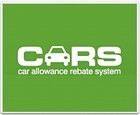Don't Let a Journalist Evaluate Cash for Clunkers
 |
by: One Eyed Guide
SeekingAlpha
October 06, 2009
Monday's WSJ article: Clunkers in Practice: One of Washington's All Time Dumb Ideas proves one of my long time suspicions: Most newspaper journalists write because they don't have enough sense to hold a business job. (Proof: look at circulation of newspapers now that they have competition from the Internet.)
From a business perspective there are two issues on whether cash for clunkers was worthwhile: the first is the long-term value proposition which was to come from energy savings and the second is short-term stimulus which is the effect it had on total sales.
The value proposition was supposed to come from the forced purchase of higher mileage cars that replaced lower mileage vehicles so that there was an increase in mileage and commensurate decrease in gasoline usage. The following is from a popular e-mail explaining this:
A clunker that travels 12,000 miles a year at 15 mpg uses 800 gallons of gas a year. A vehicle that travels 12,000 miles a year at 25 mpg uses 480 gallons a year. So, the average Cash for Clunkers transaction will reduce U.S. gasoline consumption by 320 gallons per year. They claim 700,000 vehicles so that's 224 million gallons saved per year. That equates to a bit over 5 million barrels of oil. 5 million barrels is about 5 hours worth of U.S. consumption. More importantly, 5 million barrels of oil at $70 per barrel cost about $350 million dollars. So, the government paid $3 billion of our tax dollars to save $350 million. The government spent $8.57 for every dollar saved.
This is almost correct. The increase is permanent over the life of the vehicles. This means the savings is for around 13 years, the average life of vehicles, so the energy savings payback is $4.5 billion or around $1.50 for every dollar spent. According to this, Cash for Clunkers more than paid for itself based on energy savings.
The WSJ referenced the article “Is CARS a Clunker” by Abrams and Parsons which made me laugh. This article stated that the cost per vehicle was $2600 (including the value of the clunker) and the gas saving was 840 gallons. They did a nice calculation on the environmental savings in pollution costs of $.71 per gallon or a total of $596 and concluded that the program costs $2000 per vehicle. Ha ha, they must’ve been trying to see if we were paying attention because they left out the savings from the gasoline that wasn’t used. If 840 gallons were not used then there would be a savings of $2100 at the current national average cost of $2.50 per gallon. The net benefit of the program is $100 per vehicle if you assumed that gasoline that is saved has a cost benefit.
The WSJ seems to think that the current drop in sales indicates the program was a failure. First of all the drop in sales simply brought them down to the trend of the months before the stimulus and shows no indication of significant reduction in sales. In fact, auto sales for September were down only 22.7% while year-to-date sales, which include the clunkers stimulus, were down 29.2%.
As a former brand manager, I’m surprised that sales didn’t drop below trend. There may have been relatively little forward movement of purchases because the vehicle had to be worth much less than $4,500 and replaced with a new vehicle. Most of the people with vehicles this cheap only buy vehicles when the old one dies and then probably buy used vehicles. (I learned this raising about $8MM though vehicle donations.) I’d estimated before the program ended that the purchase move forward/back was not more than 33% but it appears to have been much less than this. In fact, the data shows no reduction in sales trend so it is all net gain.
The Wall Street Journal really needs to get a brand manager to evaluate programs like this, not a journalist.


